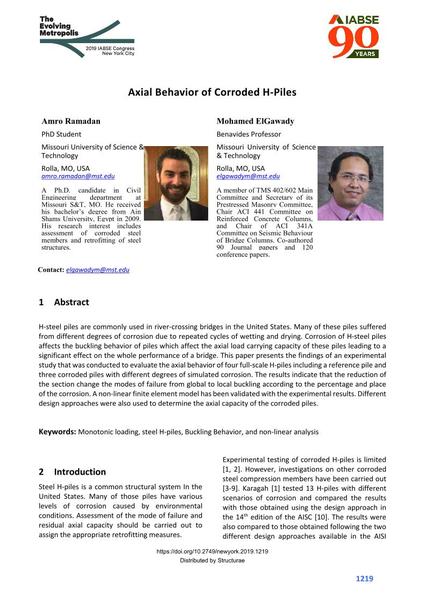Axial Behavior of Corroded H-Piles

|
|
|||||||||||
Détails bibliographiques
| Auteur(s): |
Amro Ramadan
(Missouri University of Science & Technology)
Mohamed ElGawady |
||||
|---|---|---|---|---|---|
| Médium: | papier de conférence | ||||
| Langue(s): | anglais | ||||
| Conférence: | IABSE Congress: The Evolving Metropolis, New York, NY, USA, 4-6 September 2019 | ||||
| Publié dans: | The Evolving Metropolis | ||||
|
|||||
| Page(s): | 1219-1224 | ||||
| Nombre total de pages (du PDF): | 6 | ||||
| DOI: | 10.2749/newyork.2019.1219 | ||||
| Abstrait: |
H-steel piles are commonly used in river-crossing bridges in the United States. Many of these piles suffered from different degrees of corrosion due to repeated cycles of wetting and drying. Corrosion of H-steel piles affects the buckling behavior of piles which affect the axial load carrying capacity of these piles leading to a significant effect on the whole performance of a bridge. This paper presents the findings of an experimental study that was conducted to evaluate the axial behavior of four full-scale H-piles including a reference pile and three corroded piles with different degrees of simulated corrosion. The results indicate that the reduction of the section change the modes of failure from global to local buckling according to the percentage and place of the corrosion. A non-linear finite element model has been validated with the experimental results. Different design approaches were also used to determine the axial capacity of the corroded piles. |
||||
